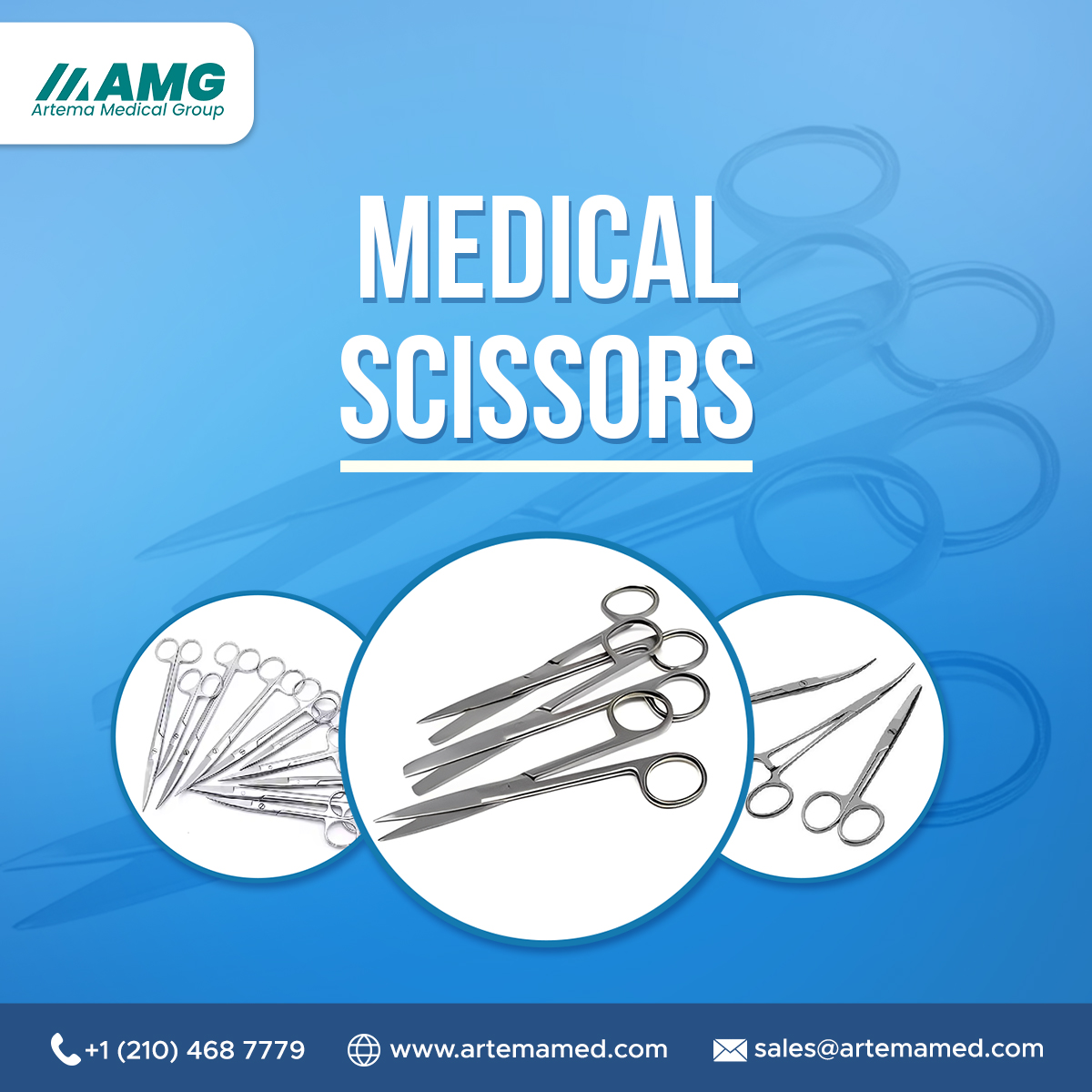Introduction to Surgical Operating Scissors
Surgical operating scissors are a key tool in the medical field. Surgeons use them during almost every operation. They are made to perform clean and accurate cuts. These scissors are designed to handle both soft and tough tissues. Their importance cannot be overlooked in surgical work. They help ensure safety, precision, and control during procedures.
The different kinds of surgical scissors help doctors perform a wide range of tasks. These scissors are designed for special uses based on the type of surgery. Their sharp blades and ergonomic design make them essential for both routine and complex operations.
Cutting Soft Tissues with Ease
One of the most common uses of surgical operating scissors is to cut soft tissues. Surgeons must carefully separate tissues to reach the affected area. This must be done without causing extra damage. Scissors like Metzenbaum scissors are perfect for this job. They have thin blades and are made for gentle cutting.
Using the right kind of scissors helps the surgeon avoid tissue tears. This leads to a smoother operation and a faster healing time for the patient. Precision in tissue cutting also reduces the chance of infection or complications after surgery.
Dissecting Layers During Surgery
Dissection is another major use of surgical scissors. When doctors need to go through multiple layers of skin, fat, or muscle, they need reliable tools. Curved scissors are often chosen for this task. They allow better visibility and access to deep areas.
Each kind of surgical scissors is designed with a special purpose. Some are long and slim for deep cuts. Others are short and strong for surface work. This range gives the surgeon full control and helps reduce risk during critical steps in surgery.
Trimming and Cutting Sutures
After completing the main steps of a surgery, the final task is often to close the wound. Surgical scissors play a vital role in this step. They are used to trim sutures after stitching. Straight scissors are often chosen for cutting thread because they offer clear visibility and sharp control.
This simple use is still very important. Clean suture cuts reduce the chance of irritation or infection. It also gives a tidy finish to the wound, which can help in healing and reduce scarring.
Removing Dressings and Bandages
Outside the operating room, surgical scissors are also used for removing bandages or medical dressings. Bandage scissors are designed with blunt tips. This helps protect the skin when cutting close to the body. Nurses and doctors use these scissors in emergency rooms and clinics.
Safe bandage removal is very important for patient comfort. It also helps avoid any unwanted harm to the skin, especially in cases where the wound is fresh or healing.
Separating Adhesions or Scar Tissue
In some surgeries, doctors have to deal with scar tissue or adhesions. These are areas where tissues have grown together. Surgical operating scissors are used to gently separate these without causing further injury.
This is a careful and slow process. It needs sharp, precise tools that the surgeon can trust. Using the right kind of surgical scissors helps complete the task with care and accuracy. It also makes the surgery safer for the patient.
Performing Emergency Procedures
In emergency settings, speed and accuracy are critical. Surgical scissors are used to cut clothing, remove barriers, and quickly expose injuries. They are often part of trauma kits or first aid sets for this reason.
These scissors must be reliable and strong enough to work under pressure. Their sharp blades and safe design allow quick responses in life-threatening situations. This makes them a must-have tool in ambulances and ER departments.
Applications in Minor Surgeries
Minor surgical procedures also rely on surgical operating scissors. In dermatology or outpatient surgeries, small cuts are often needed. Iris scissors and other fine-tipped tools are used for such delicate tasks. These surgeries may include mole removal, skin biopsy, or wound cleaning.
The small size and sharpness of these scissors help ensure patient comfort. It also reduces pain and speeds up recovery. Their use shows how these tools are important even in low-risk procedures.
Supporting Plastic and Cosmetic Surgery
In cosmetic surgery, appearance is everything. Cuts must be clean, and scars must be minimal. This is where surgical scissors play a big role. Plastic surgeons use fine, sharp scissors to shape tissue and make adjustments with care.
The different kinds of surgical scissors help the doctor match the tool to the task. Whether trimming tissue or cutting sutures, these tools allow for precision that meets high standards in cosmetic results.
Vital in Eye and ENT Procedures
Eye surgery and ENT (ear, nose, and throat) procedures require extreme precision. Surgical operating scissors with very thin, sharp blades are used for these tasks. In these fields, even the smallest mistake can affect vision or hearing.
Iris scissors and other fine instruments are made to meet these exact needs. They help doctors work with confidence and safety. This makes them an important part of specialized surgical fields.
Conclusion
Surgical operating scissors are vital tools in the hands of skilled medical teams. Their uses range from soft tissue cutting to suture trimming and from bandage removal to emergency care. Each type of surgical scissors serves a special role. This allows surgeons to work with better accuracy and care.
The kinds of surgical scissors used depend on the procedure, the area being treated, and the type of tissue involved. This flexibility helps improve patient outcomes and ensures that surgeries go smoothly.
With their sharp blades, strong design, and easy handling, surgical scissors continue to be a core part of every medical facility. Their role in patient care, whether in a simple clinic visit or a complex surgery, proves their lasting value in the medical world.
Visit our website Artema med
